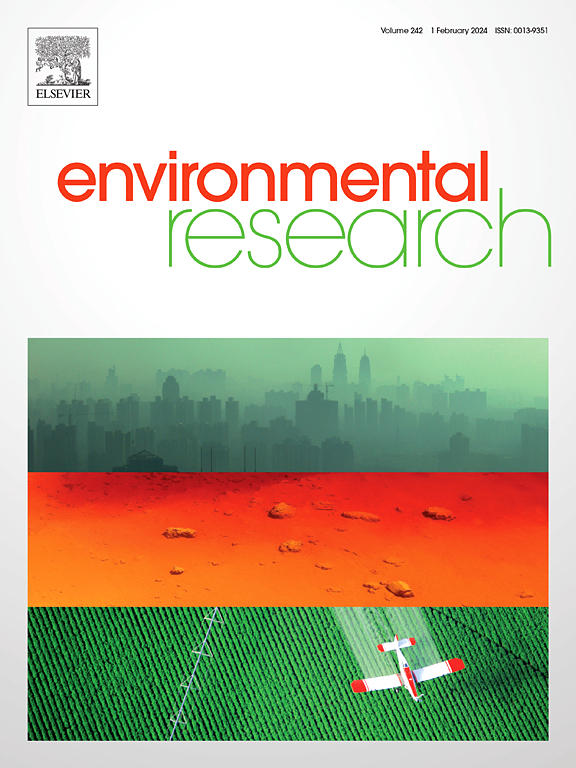Gel-fouling on the microfiltration membrane for wastewater reclamation and its suppression by using electric fields: from the viewpoints of spatiotemporal and force analysis
IF 7.7
2区 环境科学与生态学
Q1 ENVIRONMENTAL SCIENCES
引用次数: 0
Abstract
Microfiltration membrane technology holds promising applications in addressing contemporary water resources and environmental challenges for wastewater treatment, but membrane fouling remains a pivotal bottleneck hindering its advancement, especially that it is still unclear for the formation of gel-fouling on the membrane surface, from its characteristics to development process. Applying electric field onto the microfiltration membrane filtration to control membrane fouling has the advantages of safety, green and easy-manipulation. This study explored the gel-fouling characteristics of typical foulants such as sodium alginate (SA), bovine serum albumin (BSA), humic acid (HA) filtered by polyvinylidene fluoride (PVDF) microfiltration membrane, and its dynamic development. Hermia model was introduced to simulate and quantify the membrane flux, and it was observed that SA resulted in the most severe gel-fouling. Gel-fouling could be formed with the start of filtration, lasted for a period of time, and then to produce a dense fouling layer on the membrane surface. It is then suggested that the fouling control time should be synchronized with the start of filtration. Effects of different factors on the electric field control for gel-fouling were investigated, and the applied electric field in the same direction with permeation was better than that under the opposite one. When filtering 30 mg/L SA solution under an electric field, gel-fouling can be well controlled. Force analysis showed that enhanced electrophoretic force was effective in alleviating membrane fouling. The obtained results would advance the understanding of the gel-fouling mechanisms in microfiltration technology for wastewater treatment, particularly focusing on its spatiotemporal development. Moreover, by leveraging electric fields to regulate fouling, this strategy offers a scientific foundation and technical backbone for membrane separation that strived for low energy consumption and high operational efficiency.

废水回用微滤膜的凝胶污染及其电场抑制:从时空和力分析的角度
微滤膜技术在解决当代水资源和废水处理的环境挑战方面具有广阔的应用前景,但膜污染仍然是阻碍其发展的关键瓶颈,特别是膜表面凝胶污染的形成,从其特征到发展过程尚不清楚。利用电场对微滤膜进行过滤控制膜污染,具有安全、绿色、易于操作等优点。本研究探讨了聚偏氟乙烯(PVDF)微滤膜过滤海藻酸钠(SA)、牛血清白蛋白(BSA)、腐植酸(HA)等典型污染物的凝胶污染特性及其动态发展。采用Hermia模型对膜通量进行模拟和量化,发现SA导致的凝胶污染最为严重。凝胶结垢可以随着过滤的开始而形成,并持续一段时间,然后在膜表面形成致密的结垢层。然后建议污垢控制时间应与过滤开始同步。研究了不同因素对凝胶污染电场控制的影响,结果表明,同渗透方向的外加电场优于相反方向的外加电场。在电场作用下过滤30 mg/L SA溶液时,凝胶结垢可以得到很好的控制。力分析表明,增强电泳力可有效缓解膜污染。所得结果将促进对微滤技术中凝胶污染机理的理解,特别是关注其时空发展。该策略通过电场调控污染,为膜分离追求低能耗、高运行效率提供了科学基础和技术支撑。
本文章由计算机程序翻译,如有差异,请以英文原文为准。
求助全文
约1分钟内获得全文
求助全文
来源期刊

Environmental Research
环境科学-公共卫生、环境卫生与职业卫生
CiteScore
12.60
自引率
8.40%
发文量
2480
审稿时长
4.7 months
期刊介绍:
The Environmental Research journal presents a broad range of interdisciplinary research, focused on addressing worldwide environmental concerns and featuring innovative findings. Our publication strives to explore relevant anthropogenic issues across various environmental sectors, showcasing practical applications in real-life settings.
 求助内容:
求助内容: 应助结果提醒方式:
应助结果提醒方式:


